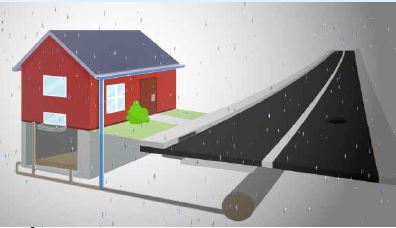
To manage wastewater flushed down toilets and emptied down sinks and drains from Toronto properties, the City has nearly 3,800 kilometres of sanitary sewers located under the streets and more than 523,000 City-owned sewer service line connections.
There are two parts of the underground sewer service line – the City-side that is connected to the sanitary sewer under the street and the private-side that is connected to the property with the division at the property line. Private-side sewer service lines are the responsibility of the property owner.
A property can have one of three types of sewer connections:
While there are three types of sewer connections, there are two types of sewer systems in Toronto: the separated sewer system and the combined sewers system.

Sanitary sewers transport wastewater released from a drain, toilet, sink or appliance such as a clothes or dishwasher. This wastewater from residences and businesses flows to treatment plants where it is cleaned before being released into Lake Ontario.
Separated storm sewers capture rainwater or snowmelt. Much of this is captured through catch basins, the square grates on the side of the road. This water flows directly into nearby waterways including streams, rivers and Lake Ontario.

Some of the City’s older areas (approximately 23 per cent), where the sewer system was built as long as a century ago, have combined sewers. Combined sewers have only one pipe that carries both sewage and stormwater. Most of the time, combined sewers carry all contents (rain, melted snow and sewage) to wastewater treatment plants for full treatment.
During periods of heavy rainfall, combined sewers may fill beyond capacity, causing a combined sewer overflow.